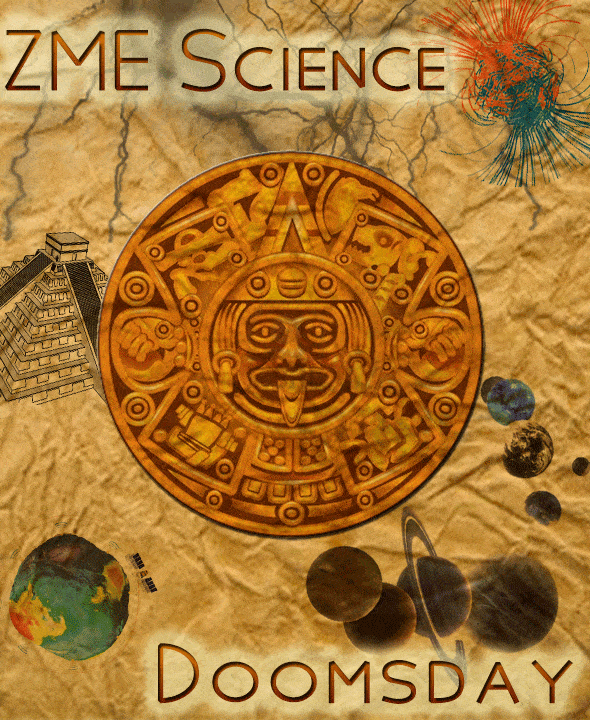
You’ve seen it on the news, so you know it’s true. Your 8 o’clock special news report showcases in a Mayan Apocalypse special a computer simulation of a massive meteor or asteroid impacting Earth causing world doom. There’s no mention anywhere in any Mayan records or myths that the end of the Mayan calendar is associated with an impact from a cosmic body, still the media seems to be obsessed with imagery of asteroid impacts whenever world annihilation is mentioned. Still would it be possible?
Reality check
Thanks for government and private agencies that monitor bodies on a possible collision course with Earth, for the year of 2012 there aren’t any reported marginally real threats of an asteroid impact. In fact, scientists are capable of predicting threatening orbits with plenty of time in advance, a number of preventive measures can then be taken to avoid any kind of catastrophe The most threatening asteroid set to come nearby Earth is Apophis in 2036 when it will flyby our planet at a mere 18,300 miles (30,000 kilometers). There’s a 1 in 250,000 possibility the asteroid might hit Earth, even then however the damage would affect a surface roughly the size of Germany, not worldwide.
NASA reports:
The Earth has always been subject to impacts by comets and asteroids, although big hits are very rare. The last big impact was 65 million years ago, and that led to the extinction of the dinosaurs. Today NASA astronomers are carrying out a survey called the Spaceguard Survey to find any large near-Earth asteroids long before they hit. We have already determined that there are no threatening asteroids as large as the one that killed the dinosaurs. All this work is done openly with the discoveries posted every day on the NASA Near-Earth Object Program Office website, so you can see for yourself that nothing is predicted to hit in 2012
Read about other popular Mayan doomsday “prophecies” from our debunking series:
- Doomsday part 1: The Maya calendar predicts the end of the world
- Doomsday part 2: Nibiru (Planet X) is coming
- Doomsday part 3: The magnetic poles are shifting!
- Doomsday part 4: solar flares
- Doomsday part 5: Planetary and galactic alignment
- Doomsday part 6: asteroid strike






